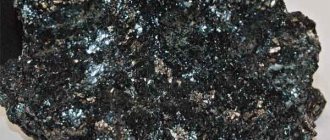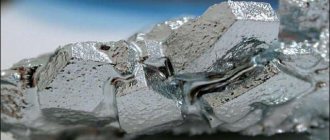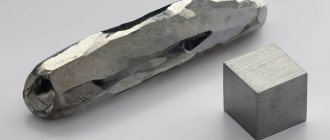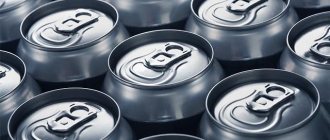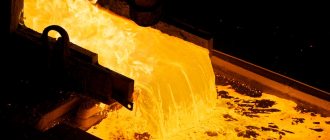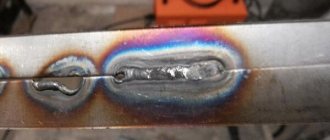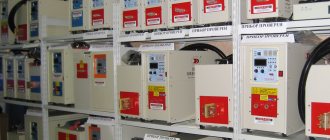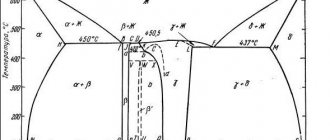History of metal
For a long time, zinc could not be obtained in its pure form. This was first done in 1738. The author of the discovery was William Champion. At the same time, the metallurgist patented its distillation version.
5 years later, in 1743, the same metallurgist opened the first plant. In 1746, chemist A.S. Marggraf developed a similar option for obtaining pure zinc. In 1805, rolling was patented as a metal processing method in Sheffield, England. It was produced at 1500C.
In Russia, zinc was produced at the metallurgical plant. The event dates back to the beginning of 1905. The electrolytic method of producing metal began to be used in 1915 at American and Canadian factories.
Applications of zinc
About 20% of the zinc produced is spent on creating zinc alloys. The most significant alloying component in them is aluminum or copper. Zinc is often used to create a copper alloy - brass. This metal is widely used for the galvanizing of steel, the creation of zinc semi-finished products, and the formation of zinc compounds. About a third of rolled zinc is zinc sheets, which are necessary for the manufacture of chemical power sources and galvanized utensils. More than half of the manufactured zinc sheets are used in the construction industry, as roofing materials, and to create drainpipes. The construction industry receives 65% of this material. But the most popular application for zinc is the coating of metal structures to prevent corrosion. Almost 50% of mined zinc is spent on this. The zinc layer perfectly protects the metal from air, sea water, groundwater, and even slightly alkaline solutions. Galvanized steel is widely used in the automotive industry. Paint adheres better to such a coating and does not deteriorate for a long time. Employees of automobile enterprises use galvanized strips and sheets to create bottoms, fuel tanks, trunk lids, wheel covers, and more.
Specifics of metal production
The hydrometallurgical method serves as the basic option for obtaining metal. First, the concentrates are fired. Subsequently, they are treated with sulfuric acid. The result is a sulfate solution. It is purified from impurities. Then electrolysis is carried out in special lead baths.
As a result of electrolysis, zinc is deposited on aluminum cathodes. Pure metal is removed from them every day, after which it is melted in induction furnaces.
Interesting fact! Zinc is not found in its native form anywhere in nature.
How are heavy metals removed from water and soil?
Heavy metals entering the soil begin to accumulate in the upper layers of this layer. There are sure ways to remove them: consumption by plants, leaching, erosion, removal by water. As a function of the element, the half-life of removal from the soil may vary. For example, reducing the initial concentration to half for certain elements is: for cadmium - 13 - 110 years, for zinc 70 - 510 years, for copper - 310 - 1500 years, for lead - 770 - 5900 years.
The solubility of compounds of these elements in the soil is influenced by various factors:
World production, reserves and extraction methods
About 10 million tons are produced worldwide. The chemical element zinc is predominantly mined in China. This country accounts for 29% or 3.5 million tons. The top three zinc reserves are Peru and Australia. The top 5 list also includes India and the USA.
In Russia, zinc reserves amount to 190 thousand tons. This is 11th place among all leading countries in zinc production.
Interesting fact! Zinc ranks fourth in terms of use among all known metals. Iron comes in first place, aluminum comes in second, and copper comes in third.
The element is mainly mined by open-pit mining. To do this, a quarry is formed using heavy equipment. Today this is the most affordable option for metal mining. The closed type of mining is used much less frequently. The creation of underground quarries is considered an unprofitable undertaking.
Where do heavy metals come from?
Rocks of igneous and sedimentary origin
The main natural source of heavy metal pollution is various rocks of igneous and sedimentary origin. Many minerals containing these elements may be impurities in other rocks. This group includes: chromium (Fe2Cr2O4) and titanium minerals (anatase, ilmenite, brucite). Compounds of this category of chemical elements can enter the atmosphere from space (with cosmic dust), and from the bowels of our planet (with the help of volcanic gases).
Anthropogenic pollution
An important factor in the release of heavy metals into the environment is anthropogenic pollution . The cement industry, ferrous and non-ferrous metallurgy, due to technological processes at high temperatures, releases very large amounts of these elements into our environment. These pollutants can also penetrate into our food if the fields were irrigated with water containing a high concentration of such chemical elements (for example, domestic wastewater). This happens because some of them are considered microelements. Of course, this is not the only way these metals end up in water bodies. If there are metallurgical enterprises, mines near your habitat, or large amounts of mineral fertilizers containing zinc, copper, iron, molybdenum are applied to your fields, then they can get into groundwater due to rain and melting snow. So I advise you to test the water quality for heavy metal content in the area if you want to dig a well.
Not only local anthropogenic activity can affect the increase in the content of heavy metals in the atmosphere. In the form of aerosols, these chemical elements can be transported many tens, hundreds, and even thousands of kilometers from the place of their release into the atmosphere. Also, heavy elements can accumulate at the bottom of closed reservoirs in sediments. Part of their content is formed by insoluble carbonates, sulfates, and are also included in mineral and organic sediments. Thus, the content of heavy metals in reservoir sediments increases, but if the sediments are oversaturated with these metals, they will fall back into the water and then there will be a “double whammy.” Why is that? Yes, because we have not yet felt the global effect of severe pollution with such elements. When these sediments from the bottom of reservoirs lose their ability to bind them, they will “return” parts of these elements back into the water and then we will look for suitable water somewhere else. A particularly difficult situation has arisen near highways. The soil there has accumulated so much lead, cadmium and zinc that no positive forecasts are expected.
Dynamics of zinc prices, forecast for 2018
Since the beginning of the year, there has been a general negative dynamics in zinc prices. If in February 2021, per ton of metal was $3,577.25, then as of May 18, the London Metal Exchange (LME) set the zinc rate at $3,096.50.
Where to invest money
In 2021, zinc had the status of the most profitable and suitable metal for investment. In 2021, there was a trend towards a decrease in the investment attractiveness of this element. At the same time, most analysts believe that zinc will remain the leader among non-ferrous metals in 2021.
Deutsche Bank gives a forecast for zinc, which assumes an increase in the price of the metal by 8%. In the coming months, the cost of a ton of metal is predicted to be between $3,120-3,160.
Description and chemical properties
Zinc is a brittle metal of a bluish color, quickly tarnishes in air, and reacts actively with acids and alkalis. The main use of zinc is in galvanic coating processes of iron products to protect them from corrosion, and also as a constituent element of various alloys (for example, with copper in brass).
- Chemical designation – Zn;
- Atomic number – 30;
- Atomic mass – 65.37 g/mol;
- Density – 7.11 cc;
- Melting point – 420 C;
- Boiling point – 907 C;
- Atomic radius – 0.138 nm;
- Ionic radius – 0.074 nm.
Importance of zinc for human health
The recommended daily intake of zinc is 12 mg/day for an adult woman and 15 mg/day for an adult man.
The dose depends not only on the food, but also on the gender, age and general health of the person. Growing infants, children, adolescents, pregnant women, and older adults have an increased need for zinc and are at greater risk of deficiency. The human body contains from 2 to 3 g of zinc. It is found throughout the body, but with higher concentrations in the muscles, liver, kidneys, bones and prostate gland.
Food is the main source of zinc for humans, with only a small portion coming from drinking water. The main sources of zinc in the diet are red meat, poultry, fish, seafood, whole grains and dairy products.
In addition to these beneficial properties for human health, it should also be noted that zinc in the modern world has an indirect effect on the well-being of all people. By protecting steel from corrosion, zinc saves precious resources such as special alloys and energy. By extending the life of steel, zinc increases the life of capital investments, which in the case of public infrastructure (roads, bridges, ports, energy and water supplies, telecommunications) reduces the amount of taxes levied on ordinary citizens.
Zinc deficiency
Numerous studies on zinc and human health have identified potential global zinc deficiency. Moderate chronic deficiency is often found in people eating diets low in meat and fish. Symptoms associated with zinc deficiency are decreased sense of taste and smell, skin diseases, mental lethargy and decreased overall tone.
Zinc supplements can help balance a diet low in zinc, but these supplements are not recommended without consulting your doctor.
Zinc mines[edit]
The world's ten largest zinc mines (by tonnes of zinc):
| Mine name | Owner | Tons of products | Operations |
| Red Dog (USA) | Resources Tech | 552 400 (2019) [4] | quarry zinc-lead-silver mine |
| Rampura Agucha (India) | Vedanta Resources (64.9%) Government of India (29.5%) | 357 571 (2019) [26] | underground zinc-lead-silver mine |
| Mount Isa (Australia) | Glencore | 326 400 (2019) [27] | George Fisher and Lady Loretta Underground Lead-Zinc and Silver Mines |
| Antamina (Peru) | BHP (33.75%), Glencore (33.75%), Teck Resources (22.5%), Mitsubishi Corporation (10%) | 303 555 (2019) [4] | open-pit copper-zinc-molybdenum mine |
| MacArthur River (Australia) | Glencore | 271 200 (2019) [27] | quarry zinc-lead-silver mine |
| San Cristobal (Bolivia) | Sumitomo Corporation | 206 100 (2019) [28] | open-pit silver-lead-zinc mine |
| Dugald River (Australia) | China Minmetals | 170 057 (2019) [29] | underground excavation and embankment stop |
| Vasante (Brazil) | Nexa Resources | 139 000 (2019) [30] | underground and open-pit zinc-lead-silver mine |
| Cerro Lindo (Peru) | Nexa Resources | 126 000 (2019) [30] | underground zinc-lead-copper-silver mine |
| Tara (Ireland) | Boliden AB | 122 463 (2019) [31] | underground zinc-lead mine |
